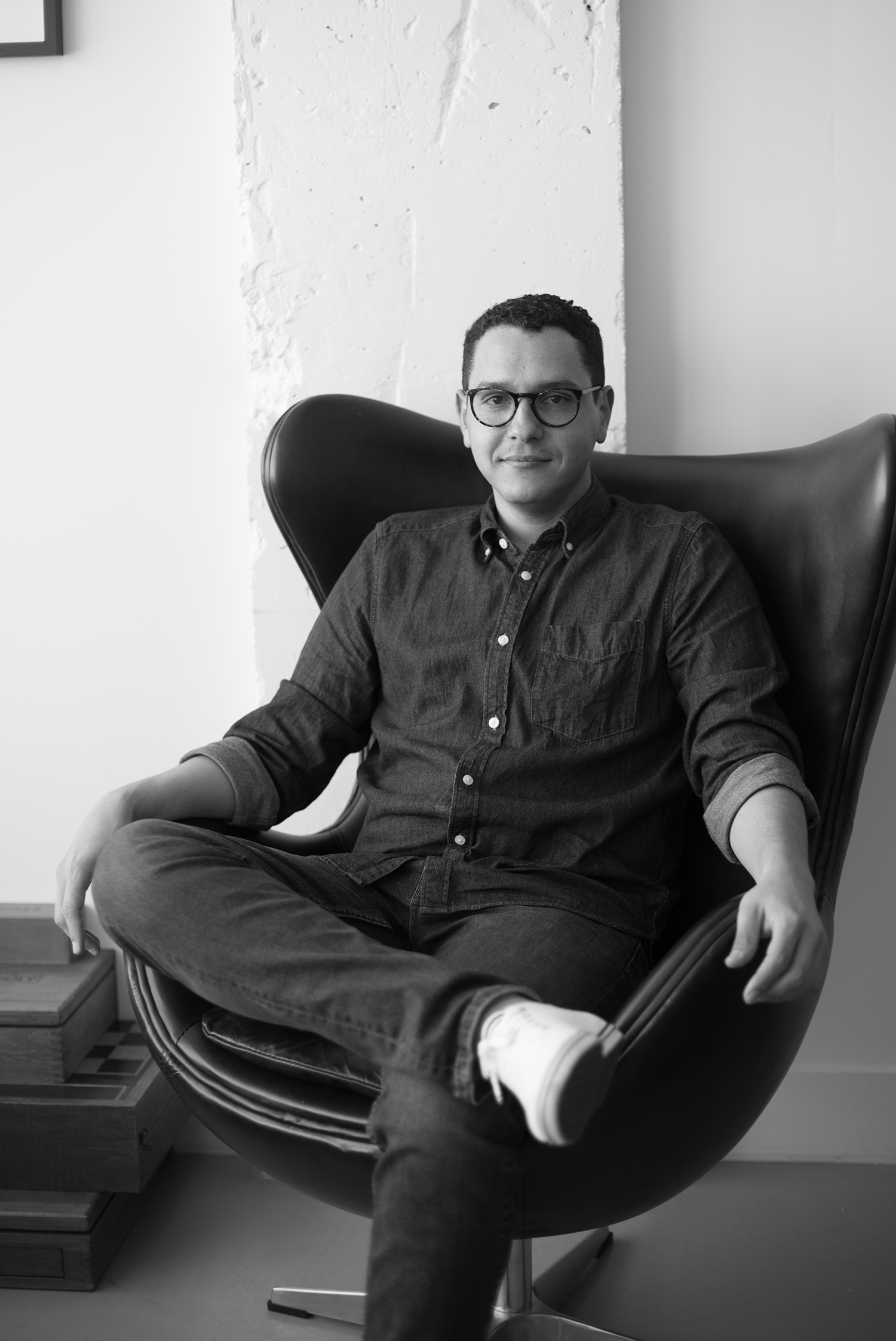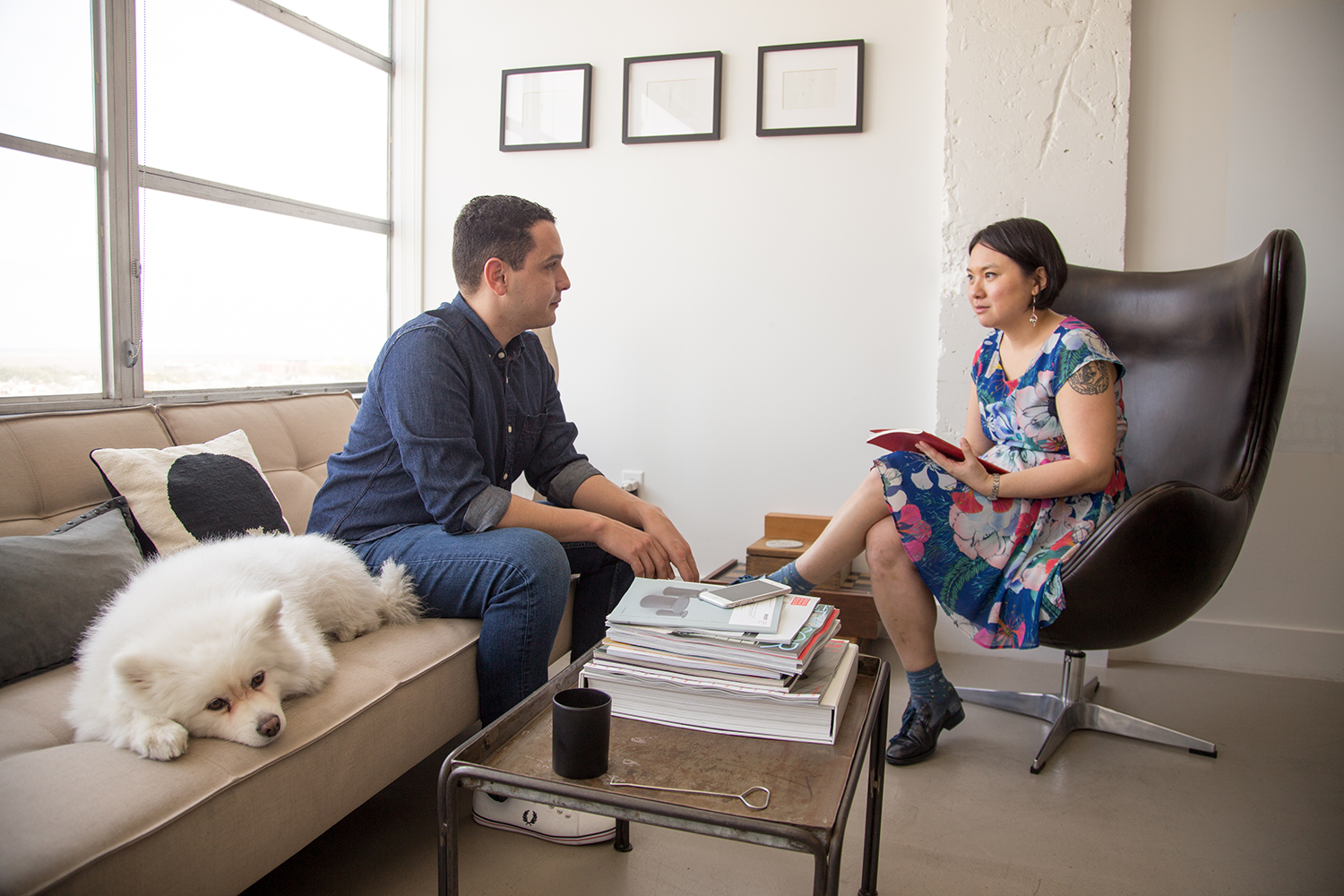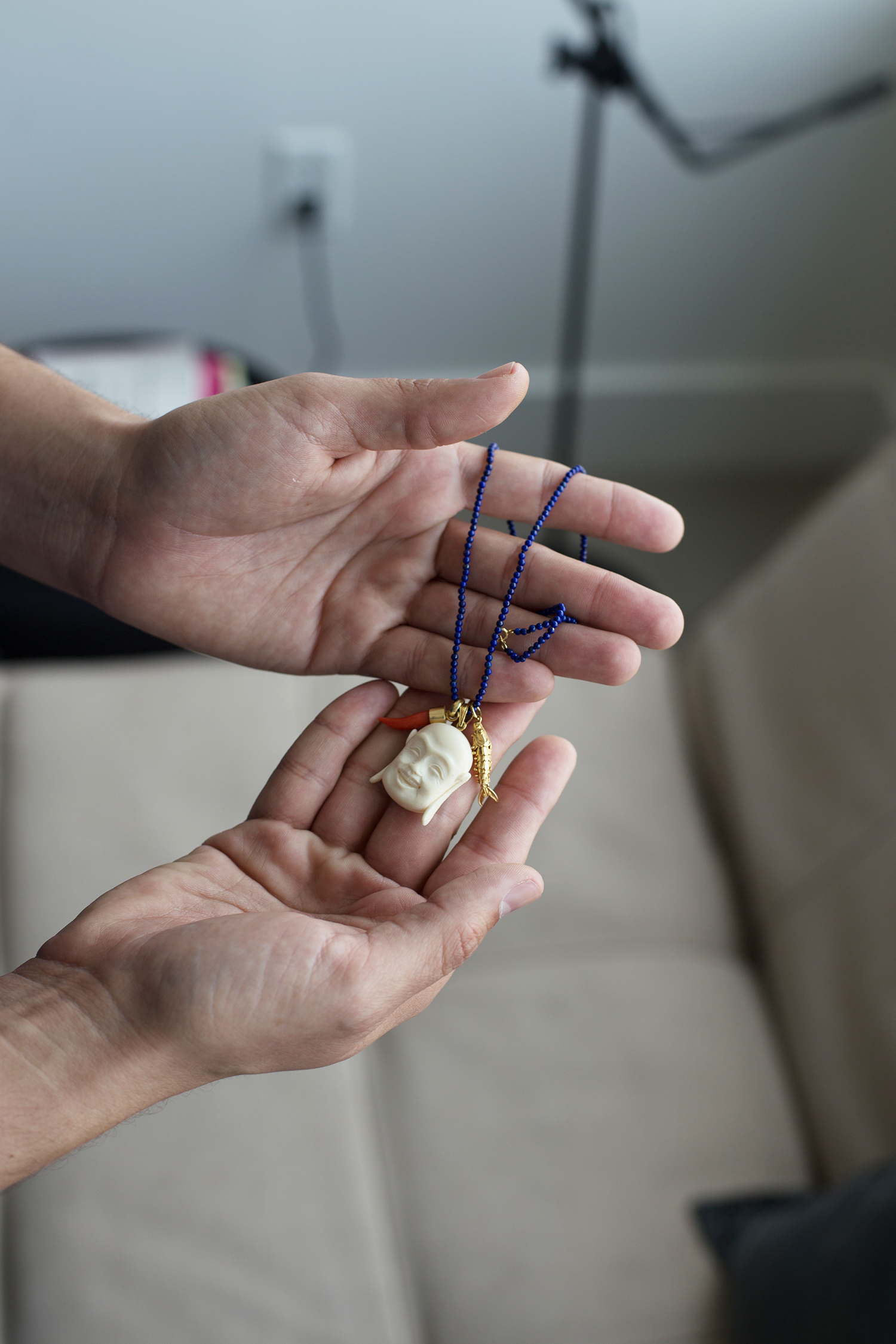SCAD alumnus Arturo Diaz-Rodriguez (M.A. Design Management) is not your conventional jewelry designer. By day, he is a design strategist, working for companies to develop user-centric approaches for clients. However, in his heart, he is a translator of ideas and a storyteller through intricate wearable pieces. Diaz-Rodriguez took a moment to share some gems of advice as well as provide insight into his work.

This might be a weird question, but what posters did you have in your room when you were a kid?
None. I wasn’t allowed any. If I had been, I would have had a Beyoncé poster. When I was living in Montreal, the song “Crazy in Love” came out from her solo album, Dangerously in Love. One day, I saw posters of Beyoncé wearing a glamorous and almost transparent diamond-studded top in the subway station. I would have liked to have that poster in my room.
Good choice! What was the most memorable piece of jewelry that inspired your passion?
My mom’s engagement ring– or what I thought was her engagement ring. When I was young, she wore a beautiful ring that had 13 diamonds that I always assumed was her engagement ring. I later discovered that it wasn’t. It was a ring my dad gave her for their 13th anniversary, hence the 13 diamonds.
How has your M.A. in Design Management helped you with your jewelry business?
Design management is an approach that applies design principles to solve problems. Basically, it’s about being user-centric and understanding what the user wants. My education at SCAD taught me to leave my ego behind and collaborate, which made me a better designer. It also made me realize my role as a translator. I translate ideas and stories into jewelry pieces.
How do the principles of design management apply to your jewelry business?
They are similar to the design process. The initial discovery part allows me to get to know my clients and learn about their needs and wants. Immediately after, I start researching. That’s where I gain insights about the project. During the process of ideation, I put the insights into action and create designs based on them. Then, I make some sketches, which I consider to be my prototyping. I would show them to my clients and have a discussion. I would modify the design based on their feedback. Finally, I produce the piece, based on the final design.
Can you tell us about a recent project?
Recently, I finished a Buddha ring for a friend. This story started three years ago when she told me that she’s always wanted a Buddha ring. I asked her why, and she said that she wanted something to remind her of her grandmother, who gave her a stunning, carved Buddha from her trip to China. My friend wanted something specific: a lapis lazuli Buddha. I said to her, we need to find the stone first—and this conversation was the beginning of this project. A year later, I found the perfect Buddha in New York. I showed it to my friend, and she fell in love with it.
I enjoy making jewelry to express my feelings and help people translate ideas. It is a way for me to tell stories…I consider myself a storyteller with my jewelry.
Two years later, I called and told her that it was time to start the project because I was going back to Mexico, where my workshop is located. We sketched an idea, and she loved it. She told me that she didn’t want to see any more sketches or the process from this point forward, just the finished ring. A few months later, I went to her house and gave her the ring. She cried. She said that from now on, every time she puts it on, she would feel connected to her grandmother. Her story demonstrates the heart of what I do: I create jewelry that allows the wearer to have an emotional engagement with a person or a memory.
That’s wonderful. I am curious to know the story behind your evil eye collection.
When my friend Muge was going home to Turkey, I asked her to bring some evil eyes– I was thinking about a new collection. She brought me back a bunch of them. I made a simple setting and turned them into amulets. People loved them because amulets have a history, a reason, and a purpose. I love starting projects like this– have a friend bring back something from wherever they are and translate their experience and idea into wearable pieces. Also, these objects are opportunities. I was able to take a piece of Turkish culture and turn it into something special for people here in the U.S. or Mexico.
Lastly, what are your dreams and aspirations for your jewelry business?
I enjoy making jewelry to express my feelings and help people translate ideas. It is a way for me to tell stories. It’s not something I would do full-time. I make about 30 pieces a year when an inspiration strikes me, or if somebody comes to me and tells me a story. I consider myself a storyteller with my jewelry.
Written and interviewed by Kayo Chang Black
Photography by Liam Graham Haehnle
Modeled by Muge Mahmutcavusoglu




